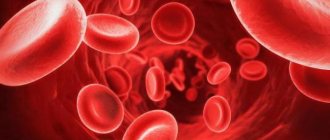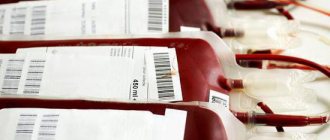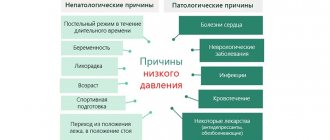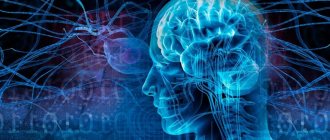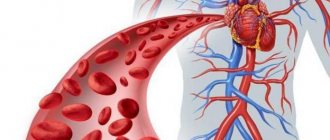According to current Russian legislation, every capable citizen over the age of 18 who has undergone a medical examination can become a donor of blood and its components. Body weight should not be less than 50 kg. There are certain contraindications to donating blood and its components. If you do not have the diseases listed in this list, you can be a donor. If you have diseases that are not included in this list, or you are taking any medications, your doctor will decide on donation. A medical examination of the donor before donating blood and its components and the issuance of certificates about his state of health are free of charge.
According to existing norms of blood donation:
- Whole blood can be donated once every 2 months;
- Plasma - 2 times a month;
- Thrombocytapheresis - 2 times a month;
- Erythrocytapheresis - once every 2 months;
- Granulocytapheresis - once a month.
Women can donate whole blood no more than four times within 12 months. Men - no more than five for the same period. Platelets and plasma - no more than 10 times for both men and women.
Following these recommendations is especially important if you are donating platelets or plasma. Neglecting them will not allow high-quality separation (separation of the necessary components) of your blood and will make donation impossible.
You can undergo an examination and donate blood in the department of blood transfusion and gravitational surgery, only by appointment and agreement with the doctors of the blood service.
See also: Procedure for examination and blood donation
You can become a blood donor if:
- You are 18 years old at the time of donation;
- Your weight is from 50 kg. and body mass index from 18.5 and not more than 40 (calculate BMI);
- You have original documents (passport and SNILS);
- Your donation deadline has come;
- You followed the recommendations BEFORE and AFTER donation;
- You are a citizen of the Russian Federation or a foreign citizen with supporting documents for at least 1 year of residence in the Russian Federation;
- You have no temporary or absolute contraindications;
- On the day of contacting the blood service institution, your group is in need according to the donor traffic light;
- You returned from a foreign country (including the CIS) more than a month ago;
- You have passed 1 month from the date of the full vaccination cycle;
- If you have COVID-19, at least 1 month has passed since your complete recovery.
Donor requirements
Donating blood for platelets is a complex procedure using a special apparatus that lasts two to three hours. This fact makes it necessary to present increased requirements to donors.
Only a completely healthy person can become a platelet donor
The following persons cannot be donors:
- under 18 years of age and over 50;
- having a body weight of less than 50 kg;
- pregnant and lactating women;
- drinking alcoholic beverages during the last 2 days;
- those who had tattoos or piercings, underwent surgery or vaccination less than six months ago;
- after a concussion;
- having transplanted organs and oncological pathologies;
- leading an immoral lifestyle (alcoholics, drug addicts);
- susceptible to diseases of the cardiovascular system, HIV infection, AIDS, allergic reactions, tuberculosis, asthma, ulcerative lesions, hepatitis;
- suffering from viral, inflammatory, as well as any chronic and acute pathologies, as well as malfunctions of the coagulation system;
- having mental pathologies, hearing, vision and speech impairments;
- undergoing drug therapy.
Also, platelet mass cannot be donated by women during menstruation.
The attending physician may not allow you to donate platelets for other reasons, providing reasons for his refusal.
Where to donate blood?
- The city blood transfusion station accepts donors without an appointment on weekdays (working days) from 09:00 to 13:00 and the first Saturday of the month from 09:00 to 13:00 according to the donor traffic light. Institution address: metro station Moscow Gate, Moskovsky Prospekt, building 104X (map).
- If for some reason you cannot donate blood at the City Blood Transfusion Station, then this can be done in the blood transfusion departments (BTD) at large healthcare institutions in St. Petersburg. Full list here.
The dangers of plateletpheresis
Although many doctors claim that the donor’s body does not suffer from thrombocytopheresis, there is no reason to completely trust this. The human body constantly needs protection. This is also true for the functions performed by platelets.
If you do not take into account the processes that occur inside the body at the time of blood sampling, after the procedure the donor may experience severe fatigue, drowsiness and weakness. Within a few days, the following situations may pose a danger:
- cuts;
- bruises;
- any injuries.
The donor's stamina decreases. On the day of blood sampling, you should not engage in active activities or mental work.
Social support measures for donors
- Rest days. After donating blood, the donor receives a certificate that gives him the right to 2 days off during the calendar year from the date of donation (Article 186 of the Labor Code of the Russian Federation). Full text of explanations for the employee and employer with all references to legislative acts.
- Nutrition compensation. City institutions, in accordance with regulations, pay a gratuitous blood donor monetary compensation for food in the amount of 5% of the cost of living established for residents of the city of St. Petersburg (as of June 2021 - 654 rubles), as well as in accordance with Chapter 12 of the Law of St. -Petersburg “Social Code of St. Petersburg” we make an additional one-time payment for food to a donor who has proof of residence in St. Petersburg (as of June 2021 - 814 rubles). Please note that food compensation is not payment for blood. With the funds received, the donor must replenish his strength, namely, eat more and drink more fluids.
How is blood donation done?
Point No. 1 - registration. At the registry, the donor provides a passport and SNILS, and after checking in the information databases, our specialist draws up a card and gives the donor a questionnaire in which he must indicate information about his state of health and lifestyle. Try to answer all questions as truthfully as possible to ensure the safety of you and our patients. A donor who deliberately concealed or distorted information known to him about the state of health when performing a donor function bears liability established by the legislation of the Russian Federation if such actions resulted or could result in harm to the life or health of recipients.
- You can save your time at the institution - fill out the donor form and 3 informed consents and come with the completed documents. The file can be downloaded here. It must be completed legibly with your own hand (in block letters in black or blue ink). Consents filled out in the wrong form will not be accepted.
Point No. 2 - laboratory for rapid blood finger test. The donor is examined in the laboratory to determine the hemoglobin level, blood type and additional parameters (for component donors). The results of this examination determine whether a person can become a donor on that day.
Point No. 3 - transfusiologist. The doctor examines the donor, studies the questionnaire, asks additional questions about health, lifestyle and habits, evaluates the examination results and makes a decision on suitability for donation. ...We remind you that the final decision on the admission of a donor to the procedure, as well as determining its type and volume, is made only by the transfusiologist of our institution, guided by the List of contraindications to donation of blood and its components, Standards for the composition and biochemical parameters of peripheral blood, Intervals between types donation (link to document). In case of medical withdrawal, the transfusiologist explains to the donor the reason and duration of the withdrawal. If necessary, the donor is sent for examination to an outpatient clinic at the place of residence. If, during the examination of the donor and the collection of his medical history, assessment of his general health, as well as the associated lifestyle, there is a suspicion of drug addiction or behavior leading to the risk of contracting infectious diseases transmitted by blood, the donor should be diverted from donating blood and its components (link to document).
Point No. 4 - rest and tea before donation. Before donating blood, the donor is asked to eat before the procedure. To balance fluid in the body, it is recommended to drink more, for example, water or weak tea with cookies. We offer our donors delicious sweet tea and fragrant cookies =)
Point No. 5 - donation. The donation procedure is carried out in the most comfortable conditions for the donor. Blood is collected in specialized disposable sterile and closed systems. Video about how donation takes place.
Point No. 6 - compensation for food and rest days. After donation, each donor is issued a certificate, which gives the right to certain benefits and privileges (Read in the “Documents for Donors” section). The donor also receives compensation for food in order to regain strength after donating blood or its components.
The medical examination of the donor is carried out in full compliance with the order of the Ministry of Health of the Russian Federation No. 1166n dated October 28, 2020.
Platelets
The platelet count is measured at 10^9 thousand cells per liter (10^9/L).
An alternative unit of measurement is thousand/µl (10^3 cells per microliter).
The values are related as follows: 10^3/µl x 10^3 = 10^9 cells/l.
Reference values for different ages are presented in the table below:
| Age | Rules of interpretation |
| up to 10 days | 99-421 *10^9/l |
| 10-30 days | 150-400 *10^9/l |
| 1-6 months | 180-400 *10^9/l |
| 6-12 months | 160-390 *10^9/l |
| 1-5 years | 150-400 *10^9/l |
| 5-10 years | 180-450 *10^9/l |
| from 10 years | 150-450 *10^9/l |
An increase in the number of platelets (thrombocytosis) can be functional (reactive) in nature and appear:
- after physical overload;
- for systemic inflammatory diseases;
- with osteomyelitis (rotting and destruction of bone and adjacent soft tissue, bone marrow due to damage by pus-producing bacteria);
- for tuberculosis;
- for anemia (anemia) resulting from blood loss;
- with some types of hemolytic (caused by premature abnormal breakdown of red blood cells) anemia;
- after surgical operations;
- for oncological diseases (except hemoblastosis);
- after removal of the spleen;
- with acute blood loss;
- with pathological hemolysis (decomposition of red blood cells).
Thrombocytosis can also be caused by myeloproliferative diseases (“myelo-bone marrow, proliferation-reproduction, i.e. diseases associated with improper generation of one of the main cellular components of the blood - myelocytes), in particular:
- erythremia (a benign tumor process of the blood system associated with excessive hyperplasia of the cellular elements of the bone marrow);
- idiopathic hemorrhagic thrombocythemia (myeloproliferative neoplasm, the appearance of which significantly increases the number of platelets in the blood, and increased proliferation of megakaryocytes is observed in the bone marrow).
An abnormally low platelet count (thrombocytopenia) can be congenital, acquired, or caused by the use of a number of medications.
A decrease in platelet count is observed in the following diseases and conditions
congenital thrombocytopenia:
- with Wiskott-Aldrich syndrome;
- with Chediak-Higashi syndrome;
- with Fanconi syndrome;
- with May-Hegglin anomaly;
- with giant platelet syndrome (Bernard-Soulier syndrome);
acquired thrombocytopenia:
- with idiopathic autoimmune thrombocytopenic purpura (a chronic autoimmune hematological disease caused by increased destruction of platelets);
- with systemic lupus erythematosus (chronic inflammatory disease of connective tissues);
- against the background of viral and bacterial infections, in particular, rickettsiosis (an acute febrile illness caused by special microorganisms - rickettsia), malaria (infectious diseases caused by malarial plasmodia, which are transmitted to humans by bites of malarial mosquitoes), toxoplasmosis (a parasitic disease caused by the microorganism Toxoplasma gondi );
- with splenomegaly (pathological increase in the size of the spleen);
- with aplastic anemia (a disease of the hematopoietic system in which the hematopoietic function of the bone marrow is suppressed and, as a consequence, an abnormal decrease in the formation of red blood cells, leukocytes and platelets or only red blood cells);
- with myelophthisis (replacement of bone marrow with cancer cells or fibrous tissue);
- with tumor metastases to the bone marrow;
- with megaloblastic anemia (anemia caused by dysfunction of the hematopoietic system due to vitamin B12 deficiency);
- with paroxysmal nocturnal hemoglobinuria (a rare acquired oncological disease of the hematopoietic system, in which intravascular hemolysis occurs (destruction of red blood cells), bone marrow functions are impaired, and the likelihood of thrombotic and organ complications increases);
- with Fisher-Evans syndrome (autoimmune hemolytic anemia and thrombocytopenia);
- with DIC syndrome (disseminated intravascular coagulation syndrome);
- with massive blood transfusions (blood transfusions);
- with extracorporeal (artificial) circulation;
- during the neonatal period (in premature infants, with hemolytic disease of the newborn, with neonatal autoimmune thrombocytopenic purpura);
- with congestive heart failure;
- with renal vein thrombosis;
- due to a reaction to alcohol.
drug-induced thrombocytopenia:
- under the influence of antitumor drugs prescribed in sufficient dosages that have an effect on all patients: actinomycin D, asparaginase, azathioprine, bisulfan, chlorambucil, cisplatin, cyclophosphamide, cytarabine, dicarbazine, diunorubicin, doxorubicin, etoposide, mechlorethamine, mercaptopurine, methotrexate, nitrosomo chevin, plicamycin , procarbazine, thioguanine, vinblastine, vincristine (not always);
- due to individual reaction to drugs: some analgesics (acetaminophen, antipyrine, aspirin, codeine, meperidine, formin), non-steroidal anti-inflammatory drugs (ibuprofen, indomethacin, naproxen, oxyphenbutazone, funacetin, phenylbutazone, paramethadione, phenytoin, trimethadione, valproic acid), antihistamines (chlorpheniramine, diphenhydramine), antimicrobial agents (p-aminosalicylic acid, amphotericin B, cephalosporins, chloramphenicol, clondamycin, clotrimazole, erythromycin, isoniazid, novobiocin, organic arsenic preparations, penicillin, pyrazinamide, rifampicin, stibophen, streptomycin, sulf anilamides, tetracyclines , vancomycin), antithyroid drugs (methimazole, propylthiouracil, thiouracil), cardiovascular drugs (alprenolol, amiodarone, amrinone, captopril, digitoxin, mexiletine, nitroglycerin, oxyprenolol, quinidine, reserpine, tocainide), diuretics (acetazolamide, bumetanide, diazoxide, furosemide, mercury diuretics, thiazides, triamterene), metals (bismuth, mercury, gold compounds, silver), hypoglycemic drugs (carbutamide, chlorpropamide, glibenclamide, insulin, tolbutamide), psychotropic drugs (amitriptyline, desipramine, barbiturates, meprobamate, chlorpropazine, trifluoperazine ), other drugs (allopurinol, chloroquine, cimetidine, colchicine, cyclosporine, dextroamphetamine, dinitrophenol, ergot, estrogens, ganciclovir, heparin, hydroxychloroquine, interferon alpha, levamisole, methyldopa, penicillamine, potassium iodide, prednisone, procaine, quinine, ranitidine, timoxifen, ticlopidine, vitamin K).
The test result is issued on the form of a medical laboratory. An example of this analysis is presented below:
Full name: Sidorov Ivan Petrovich Gender: m Date of birth: xx.xx.xxxx
Date of collection of biomaterial: xx.xx.xxxx
| Study | Result | Rules of interpretation | Note |
| Clinical researches | |||
| [505] Platelets | 238 | 150.0-450.0 x 10^9/l | Date of issue (date of study): xx.xx.xxxx |
Literature:
1. Clinical laboratory diagnostics. National leadership. In 2 volumes - M., GEOTAR-Media, 2012.
2. Lewis S.M., Bain B., Bates I. Practical and laboratory hematology. - M. GEOTAR-Media, 2009, 672 p.
How to install a donor’s personal account and mobile application?
- You need to download the blood service mobile application (Google Play, App Store, AppGallery);
- You need to receive a donation code. You can receive a donation code by contacting the reception of the City Blood Transfusion Station or the specialists of the institution’s visiting team after making at least 1 (one) donation. ATTENTION! In the case of donation in an off-site setting (on-site team), the code can initially be obtained only at the second donation. The code is issued once in printed form or as an SMS. The code can be sent to the donor via SMS when contacting the specialists of the City Blood Transfusion Station with the following information provided: full name (full name), date of birth (full), mobile phone number. If the mobile phone indicated in the system differs from the mobile phone indicated in the donor’s message, the donor must contact the institution in person with a passport to receive a code and enter current data into the system;
- You must enter a unique 20-digit donation code when registering in the mobile application. Please note that it may take up to 24 hours from the time you receive your donation code to be activated for access to your Personal Account. The results of a complete laboratory test will be available no earlier than 48 hours after the complete donation. If more than 24 hours have passed since receiving the code, but it is still inactive, we recommend contacting technical support
Detailed information about the mobile application is here.
Useful information for donors
- Video about preparing for donation here
- Video about donor behavior after donation here
- Video about the need for regular donation here
- Video about myths associated with blood donation here
- Video about the path of donor blood after donation here
When reprinting information, it is mandatory to use a hyperlink to the original source of information:
- Share:
- Livejournal
- Blogs@Mail.ru
- LiveInternet
- MySpace
Print page

